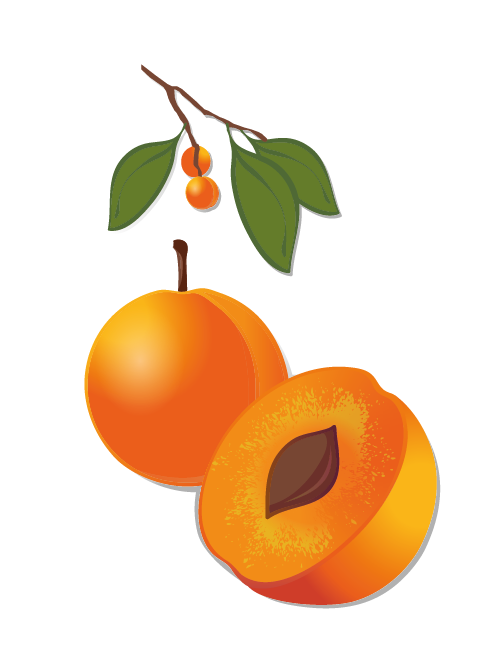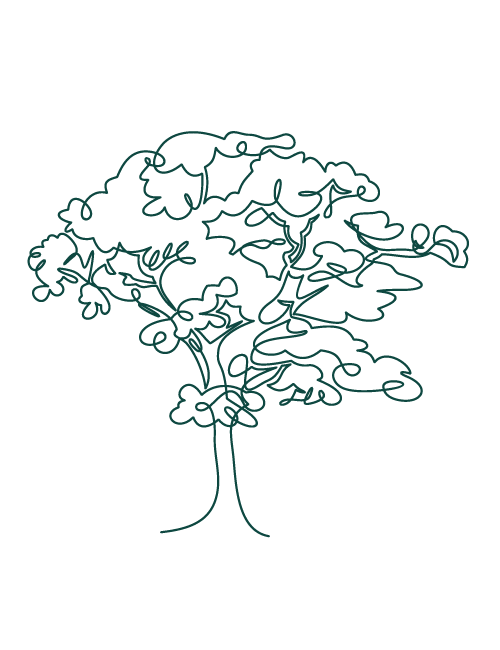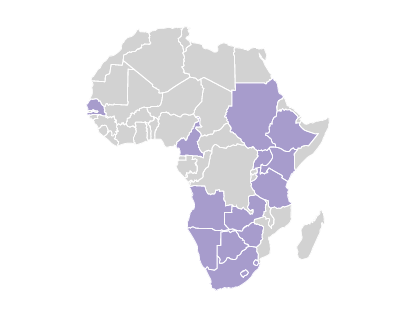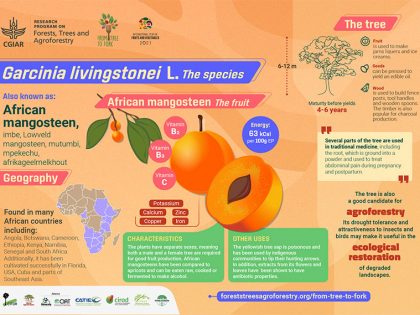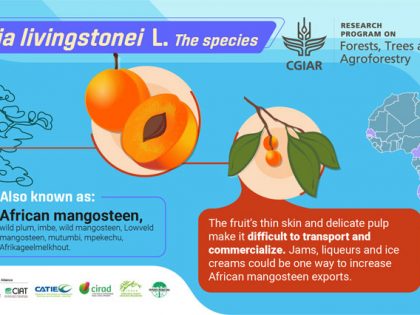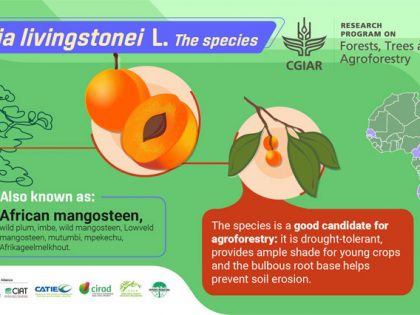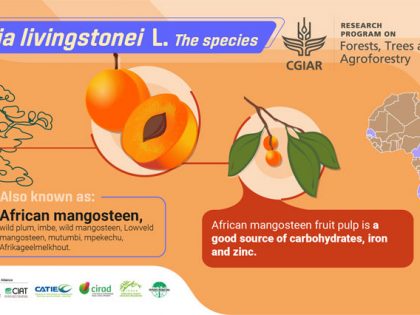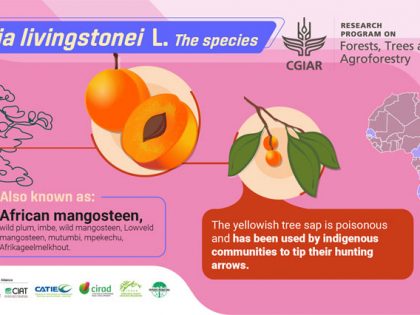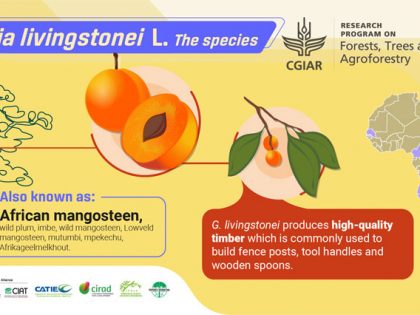Geography
Angola, Botswana, Cameroon, Ethiopia, Kenya, Namibia, Senegal, South Africa, Sudan, Tanzania, Uganda, Zambia, Zimbabwe. Additionally, it has been cultivated successfully in Florida, USA, Cuba and parts of Southeast Asia.
Uses
African mangosteen fruit tastes similar to apricots and can be eaten raw, cooked with porridge, seeded and dried, or crushed like grapes to create a drink. The seeds can be pressed to yield an edible oil, and the fruit is fermented to make a purplish wine or soaked in alcohol and mixed with syrup to make a liqueur.
Although quite popular for its taste, the fruit’s thin skin and delicate pulp make it difficult to transport and commercialize. Making secondary products like jams, liqueurs and ice creams could be one way for rural communities to generate income from the fruit. It is most often harvested from the wild, but it has also been successfully cultivated in Cuba, Florida, Mozambique and parts of southeast Asia.
G. livingstonei is a hardwood tree, commonly used to build fence posts, tool handles and wooden spoons. The timber is also popular for firewood and charcoal production. In addition, the yellowish tree sap is poisonous and has been used by indigenous communities to tip their hunting arrows.
African mangosteen is a good candidate for intercropping with other species in agroforestry systems: it is drought tolerant, provides ample shade for young crops and the bulbous root base helps prevent soil erosion. In addition, the species is attractive to insects and birds, which makes it useful to restore ecosystems and degraded landscapes. Its beautiful leaves and crown make it a popular ornamental plant.
Several parts of the tree are used in traditional medicine, including the root, which is ground into a powder and used as an aphrodisiac and to treat abdominal pain during pregnancy and postpartum. The extracts from its flowers and leaves also have antibiotic properties.


